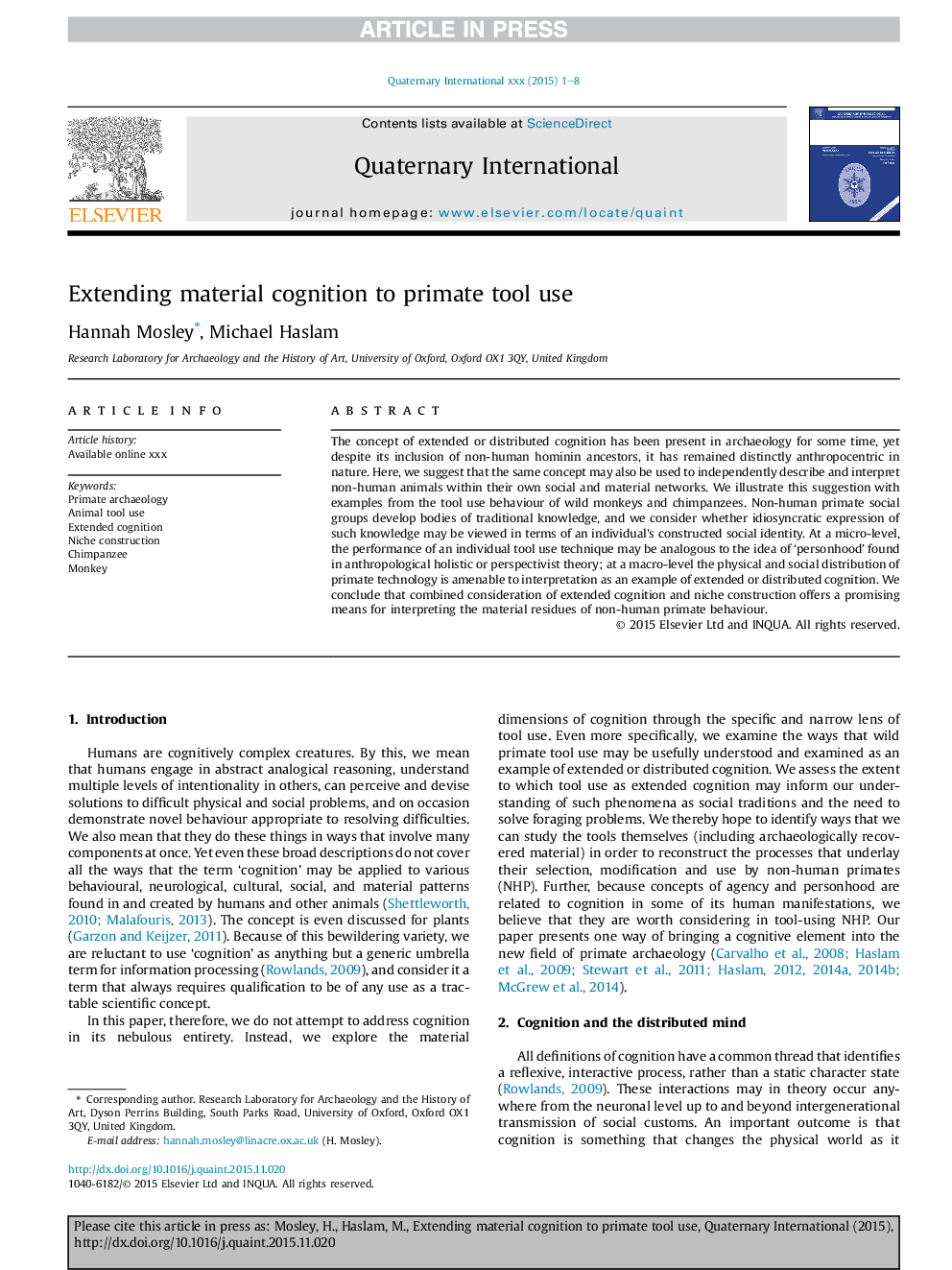| Article ID | Journal | Published Year | Pages | File Type |
|---|---|---|---|---|
| 10500906 | Quaternary International | 2016 | 8 Pages |
Abstract
The concept of extended or distributed cognition has been present in archaeology for some time, yet despite its inclusion of non-human hominin ancestors, it has remained distinctly anthropocentric in nature. Here, we suggest that the same concept may also be used to independently describe and interpret non-human animals within their own social and material networks. We illustrate this suggestion with examples from the tool use behaviour of wild monkeys and chimpanzees. Non-human primate social groups develop bodies of traditional knowledge, and we consider whether idiosyncratic expression of such knowledge may be viewed in terms of an individual's constructed social identity. At a micro-level, the performance of an individual tool use technique may be analogous to the idea of 'personhood' found in anthropological holistic or perspectivist theory; at a macro-level the physical and social distribution of primate technology is amenable to interpretation as an example of extended or distributed cognition. We conclude that combined consideration of extended cognition and niche construction offers a promising means for interpreting the material residues of non-human primate behaviour.
Related Topics
Physical Sciences and Engineering
Earth and Planetary Sciences
Geology
Authors
Hannah Mosley, Michael Haslam,
